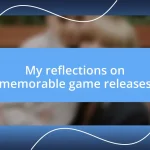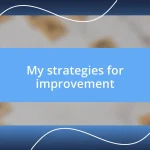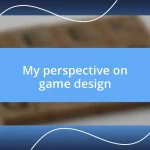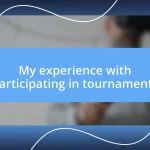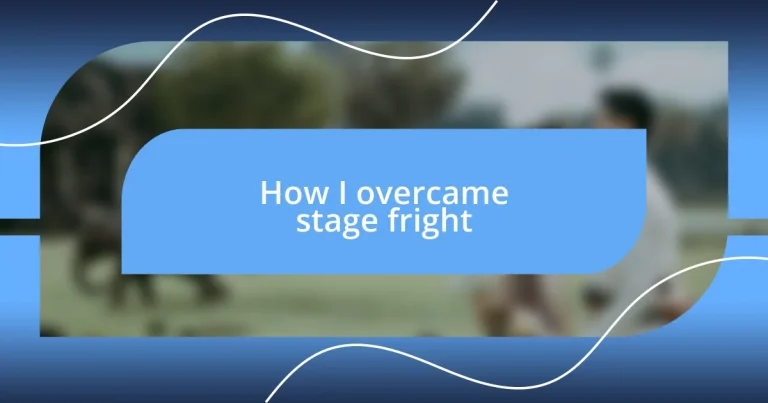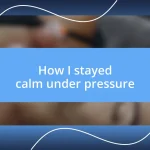Key takeaways:
- Understanding stage fright involves recognizing its common roots in fear of failure and the desire for approval, allowing a shift from anxiety to excitement.
- Implementing gradual exposure strategies, like practicing in front of small groups, builds confidence over time and transforms anxiety into a welcoming experience.
- Using positive visualization methods and reflection on past successes fosters a sense of preparedness and encourages growth, turning fears into strengths.
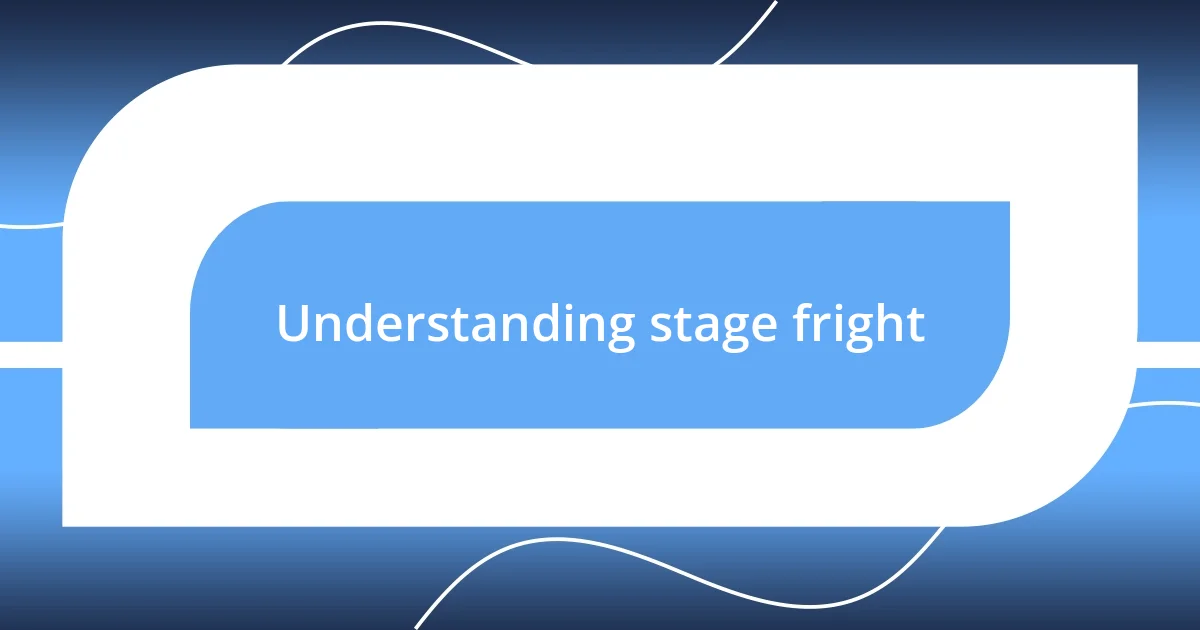
Understanding stage fright
Stage fright, or performance anxiety, can feel like an overwhelming wave of fear crashing over you right before stepping into the spotlight. I remember vividly the first time I stood in front of an audience; my heart raced, palms were sweaty, and my legs felt like jelly. It’s fascinating how our minds can conjure worst-case scenarios, isn’t it?
What’s even more intriguing is that stage fright doesn’t discriminate; it can affect seasoned performers just as much as beginners. I’ve met countless musicians and actors who share stories of their own battles with this anxiety. They often describe how the fear of judgment and the need for perfection can choke their creativity and diminish their confidence. Have you ever felt that fear creeping in when you had something important to share?
Understanding the roots of stage fright, like the fear of failure or the desire for approval, is crucial for overcoming it. For me, grasping the fact that this anxiety is a common experience was liberating. It helped me shift my focus from how I was perceived to the joy of sharing my message. This shift in perspective can transform anxiety into excitement, opening the door to a more authentic performance.
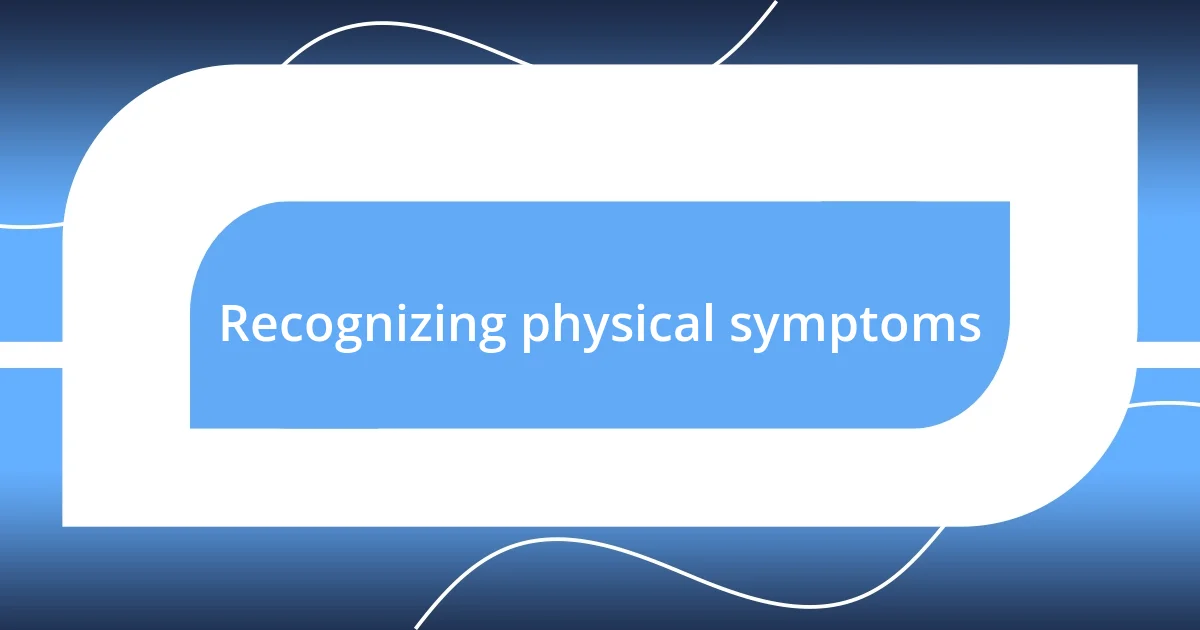
Recognizing physical symptoms
Recognizing physical symptoms can be a vital step in understanding and managing stage fright. From my experience, I often noticed a tightness in my throat and sudden, shallow breathing right before making my entrance. It’s like my body was in overdrive, responding to a perceived threat—even though I was simply about to speak to a friendly group. When you’re aware of these reactions, it becomes easier to address them head-on.
Another common symptom I’ve encountered is trembling hands. I once had to make a presentation when unexpectedly, my hands began to shake. I could almost feel my confidence slipping as I struggled to hold my notes steady. Recognizing that these physical reactions are part of a natural response can be surprisingly comforting; it allows me to take a moment to breathe deeply and regain control.
Understanding these symptoms doesn’t just help me. I’ve had conversations with friends about their experiences, and they often describe similar sensations. The more we share these moments, the more we realize how our bodies react in a similar pattern. Recognizing these responses is key to managing them effectively.
| Physical Symptom | Personal Experience |
|---|---|
| Racing Heart | Felt like my heart was about to leap from my chest before a speech. |
| Trembling Hands | Hands shook uncontrollably while I tried to maintain eye contact. |
| Shallow Breathing | Breathing turned rapid and shallow, making me feel even more anxious. |
| Tight Throat | Had difficulty swallowing, as if a lump was formed in my throat. |
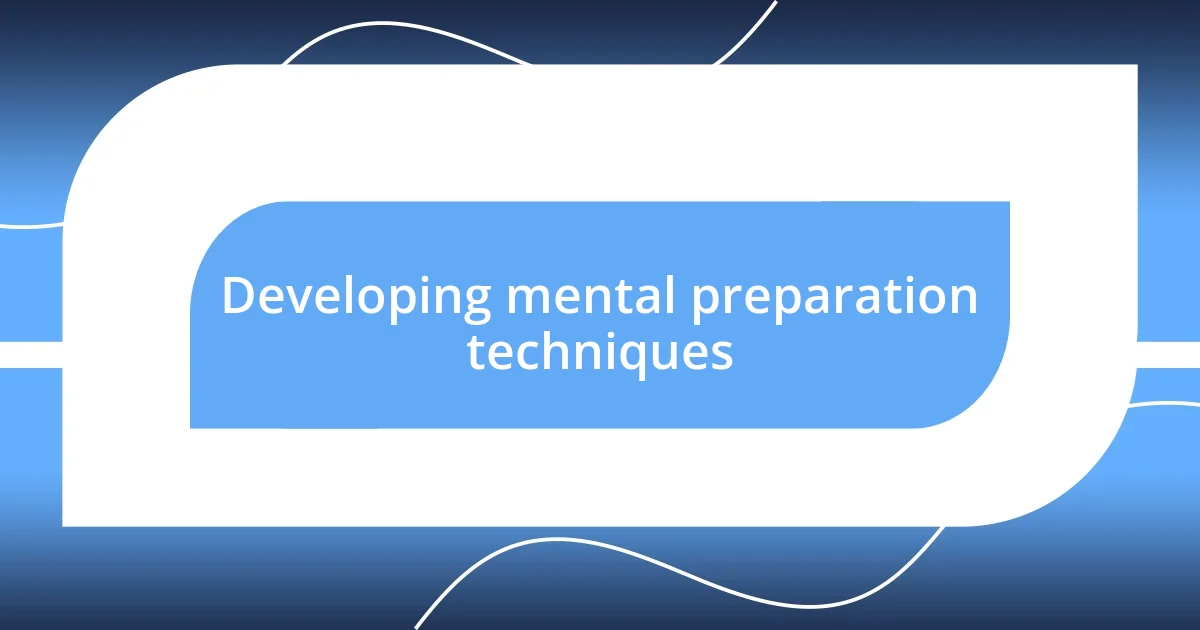
Developing mental preparation techniques
Developing mental preparation techniques has been a game-changer for me. I discovered that visualization can set the stage for a more confident performance. I vividly imagine the event, from the audience’s welcoming smiles to the moment I take my final bow. This mental rehearsal not only calms my nerves but also makes me feel like I’ve already succeeded.
Additionally, I found that incorporating positive affirmations into my routine is a powerful tool. Before stepping on stage, I remind myself of my strengths and past successes, creating a powerful mental shield against anxiety. Here are some techniques that could work for you as well:
- Visualize the entire performance, focusing on positive outcomes.
- Use positive affirmations, stating things like “I am prepared” or “I will connect with my audience.”
- Practice mindfulness or meditation to clear your mind before performing.
- Create a detailed checklist to boost your confidence in preparation.
- Set aside specific time to rehearse in front of friends or family to get used to the feeling of being observed.
By developing these techniques, I’ve learned to transform my mindset, turning fear into focus, which can be incredibly empowering.
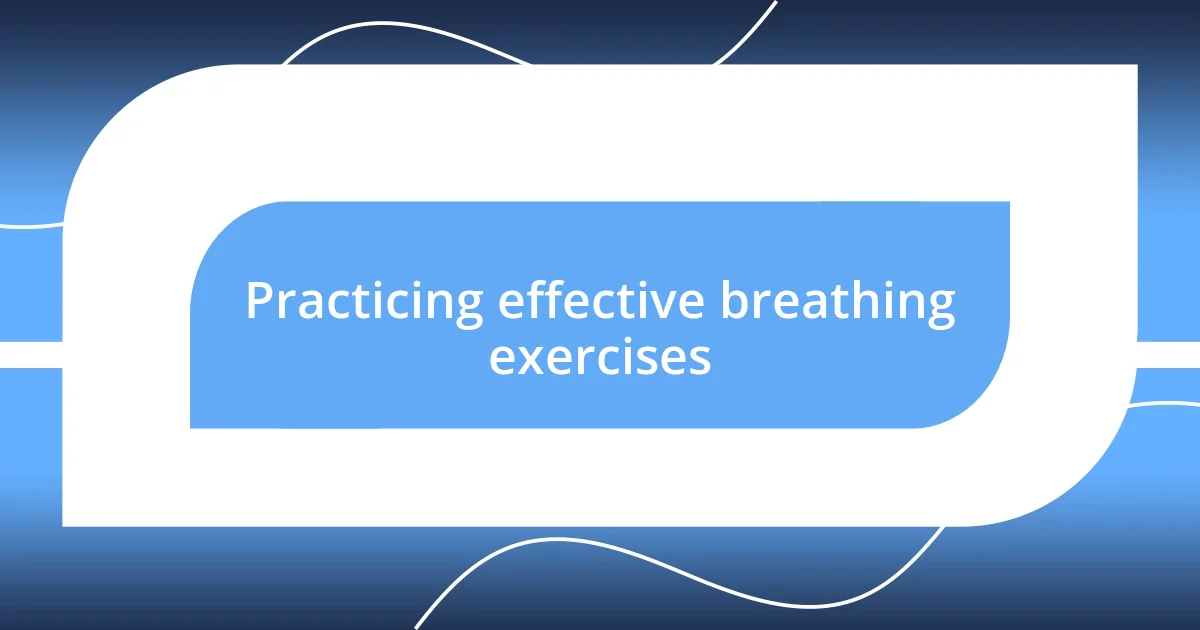
Practicing effective breathing exercises
Practicing effective breathing exercises has made a significant difference in my journey to overcome stage fright. I remember attending a workshop where the instructor introduced a simple technique: inhaling deeply through the nose for a count of four, holding for four, and then exhaling through the mouth for six. It seemed so basic, yet I was surprised at how quickly it helped me feel grounded and present, especially when the butterflies started fluttering.
One evening, during a particularly nerve-wracking presentation, I decided to apply this breathing exercise right before speaking. With each breath, I could actually feel the tension that had built up in my shoulders start to melt away. It was like releasing a tight grip on a rope that I didn’t even know I was holding. Have you ever felt that overwhelming tightness before going on stage? Finding that rhythm in my breathing turned a chaotic moment into a calm and collected one.
As I’ve continued to practice these exercises, I often pause and remind myself that breathing is something I can always control, even when other aspects of performing feel out of my grasp. When I focus on my breath, it’s not just the air filling my lungs; it’s a sense of empowerment washing over me. Breathing slowly and mindfully helps create a connection between my body and mind, reminding me that I’m here, in the moment. Have you tried really focusing on your breathing when nerves kick in? It can be a simple yet powerful tool in your arsenal against anxiety.
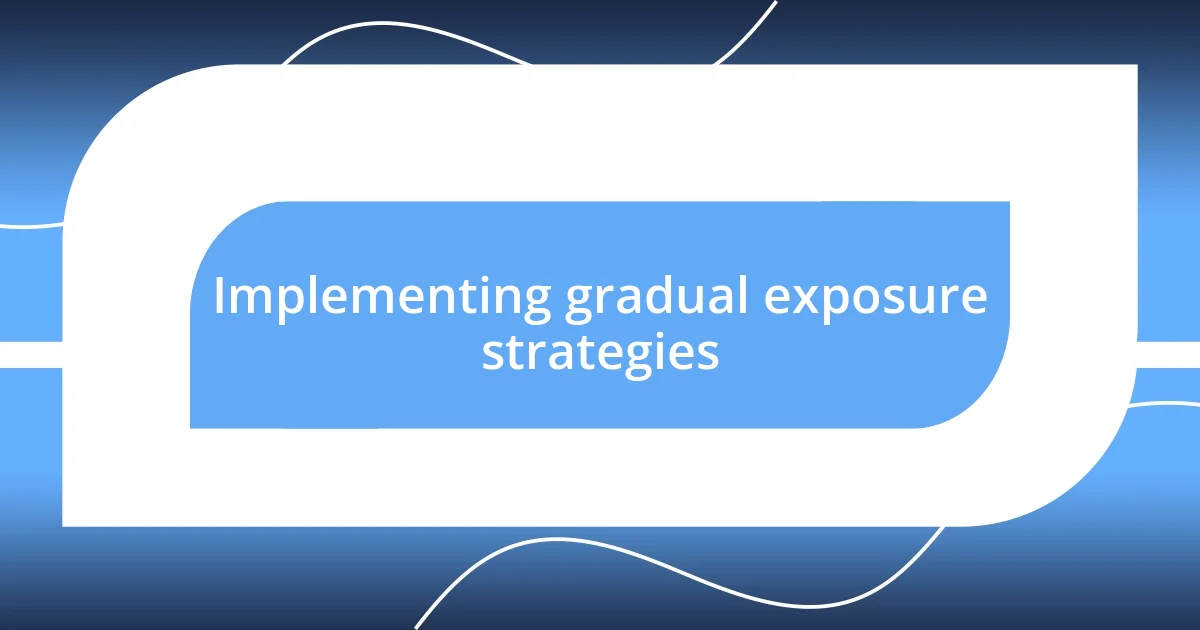
Implementing gradual exposure strategies
Implementing gradual exposure strategies significantly shifted my experience with stage fright. Initially, I started with performing in front of a mirror. That felt safe and allowed me to get comfortable presenting my material without the pressure of an audience. Slowly, I began inviting a couple of close friends to join me, turning what once was a solitary practice into an empowering moment of shared energy. Have you ever tried facing your fears step by step? It’s incredibly freeing.
Next, I applied this strategy in real-world scenarios. I signed up for local speaking events, starting with small groups before gradually increasing the audience size. I remember my first talk—only ten people in a cozy café. My heart raced, but with every minute, I felt more at ease. Each time I stepped on stage, I could feel my confidence building like a muscle. It’s fascinating how our capabilities expand when we push the boundaries little by little, isn’t it?
One standout moment was presenting at a community gathering. The crowd was much larger than I had faced before, yet I felt an unmistakable sense of excitement. All those hours of practice in front of my friends and the mirror had paid off! It’s funny how, over time, those intimidating crowds morphed into welcoming faces, eager to hear what I had to say. This gradual exposure approach solidified my belief that the only way to conquer fear is to engage with it; little by little, I transformed from a hesitant speaker into a passionate storyteller.
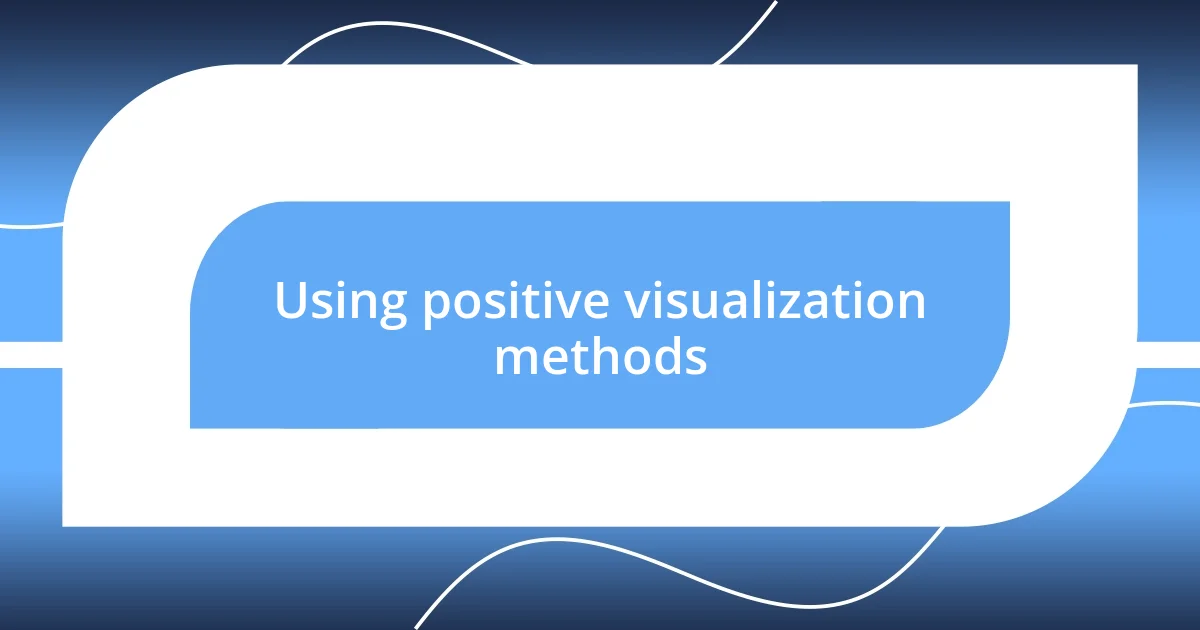
Using positive visualization methods
Using positive visualization methods has been a game-changer in my journey to beat stage fright. Before stepping onto the stage, I would close my eyes and vividly picture myself delivering a successful presentation. Imagining the audience’s smiles and nods made the experience feel real, almost as if I had already conquered the moment. Have you ever noticed how powerful our minds can be when we paint a scenario in bright colors? It truly sparked a sense of confidence within me that I didn’t know I had.
One technique I found particularly helpful was creating a ‘mental highlight reel’ of past successful moments. For instance, I would recall a time when I received a warm round of applause after sharing a heartfelt story. By replaying that in my mind, I could feel the joy and energy of that experience flowing through me once again. Do you remember a time when you nailed a performance? Reliving those high points can stir up emotions that boost our current capabilities tremendously, transforming anxiety into excitement.
Visualizing my success also helped me tackle specific fears. If I knew I was worried about forgetting my lines, I would imagine myself effortlessly recalling each point with poise. This process made me feel more prepared and less vulnerable when the moment arrived. There’s something magical about seeing yourself succeed; it creates a sense of familiarity and reduces the intimidation factor. Have you ever considered the impact of simply visualizing a positive outcome? It’s a powerful step towards truly embracing your potential.
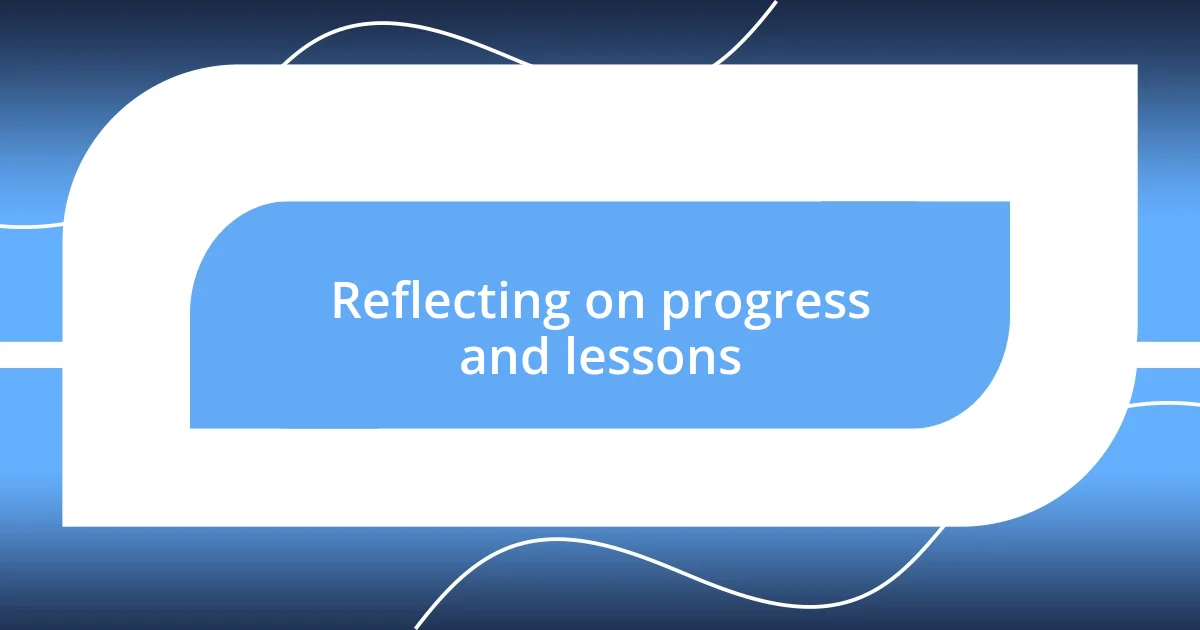
Reflecting on progress and lessons
Reflecting on my journey, I’ve noticed just how far I’ve come. Initially, the mere thought of stepping on stage would induce a wave of panic. Now, each performance feels like a reunion with friends, filled with connection and shared stories. Isn’t it astonishing how the lens of experience can transform anxiety into anticipation?
A key lesson for me was discovering that growth isn’t always linear. There were days when I felt invincible, like I could captivate any audience, while others were more challenging. I recall one event where I stumbled over my words; rather than feeling defeated, I laughed it off and engaged with the crowd. This shift from self-judgment to embracing imperfection taught me that vulnerability can create authenticity. Have you experienced a moment where your flaws turned into strengths?
As I reflect, I realize that the journey of overcoming stage fright is not just about conquering fear; it’s about building resilience. I now look back on my early struggles not with embarrassment but with gratitude. Each experience has layered a foundation of confidence that no setback can diminish. Have you recognized the power in your past challenges? They often serve as the building blocks for our greatest successes.
